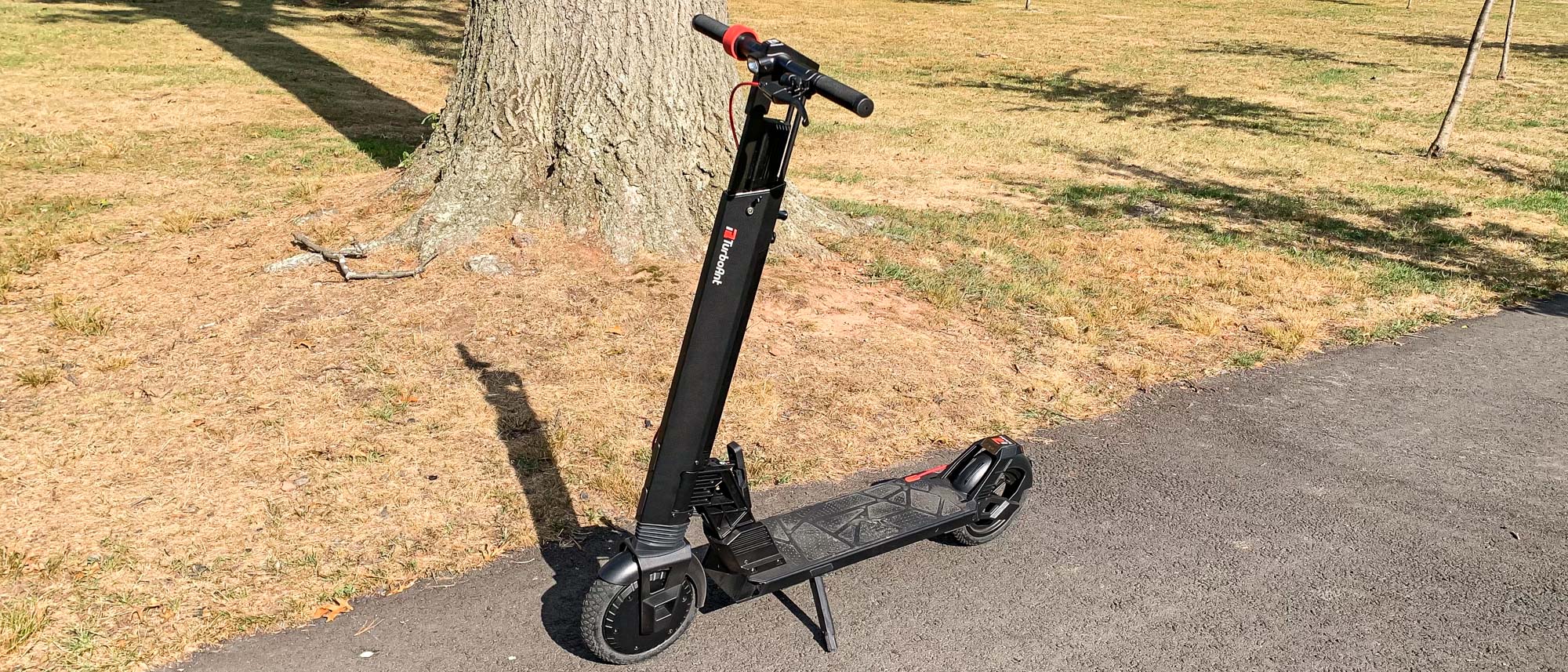Tom's Guide Verdict
Two batteries and a slot for a bike lock make the TurboAnt V8 a very good electric scooter for those who have to travel long distances, and want to make sure no one steals their ride. However, the V8 is very heavy and bulky, so it’s difficult to carry.
Pros
- +
Removable battery
- +
headlight/taillight
- +
Bike lock slot
Cons
- -
Very heavy
- -
Hard to carry
- -
Has trouble climbing steeper hills
Why you can trust Tom's Guide
Size (folded): 45.7 × 19.9 × 18.1 inches
Size (unfolded): 45.7 × 19.9 × 45.5 inches
Weight: 47.62 pounds
Top speed: 20 mph
Max estimated range: 50 miles
Motor: 450W front hub
Battery: 36V, 7.5 Ah x 2
Max rider weight: 275 pounds
Tires: 9.3-inch pneumatic
As more of us use electric scooters for alternative transportation — say, to go to work or the grocery store — the likelihood that your scooter will get stolen increases. While it’s a good idea to lock your scooter up to a bike rack or light post, many of the best electric scooters don’t have a good way for you to do this.
The TurboAnt V8 is one of the few electric scooters with a dedicated slot for a bike lock, so you can leave your hoopty secure in the knowledge that someone won’t walk — or ride — off with it. Plus, the V8 has dual batteries with a promised 50-mile range, so you won’t have to charge it as often, either. Does this $649 scooter rise to the level of some of the best electric scooters? You’ll have to read the rest of our TurboAnt V8 review to find out.
TurboAnt V8 review: Price and availability
The TurboAnt V8 was released in August of 2022; it’s available for $799 on TurboAnt’s website.
TurboAnt V8 review: Design
This is one aggressively designed scooter. Where I thought the TurboAnt M10 was a bit generic, there’s no mistaking the V8’s angular, ridged design. Starting from the top, the handlebars are connected to the beefy, hexagonal downtube by three struts.
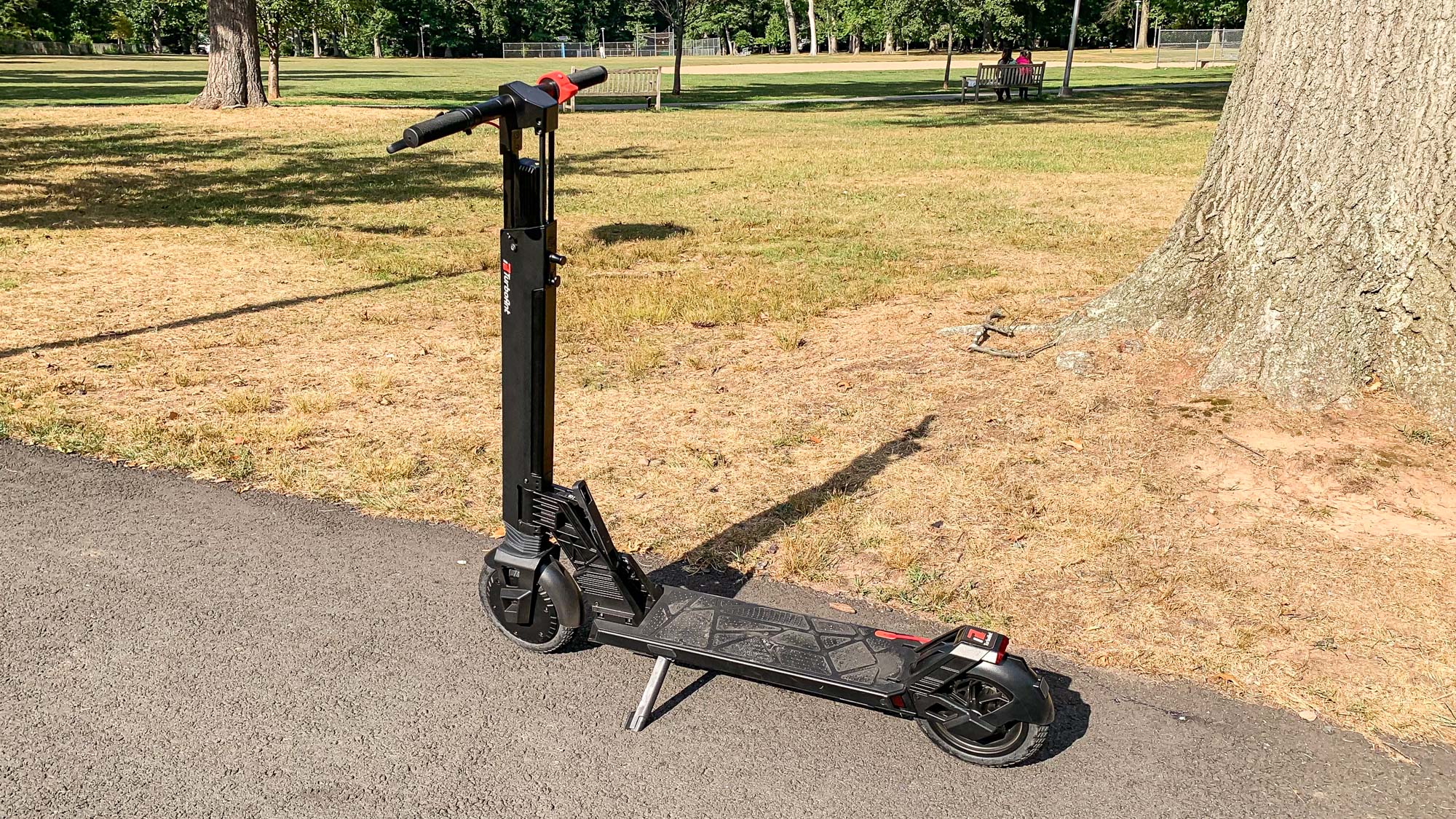
The connector between the downtube and the deck is a chunk of machined metal, with large cutouts giving it an industrial look. Even the rubber mat on the large 19.7 x 6.9-inch deck has a similar pattern, allowing the design to flow all the way to the back of the scooter.
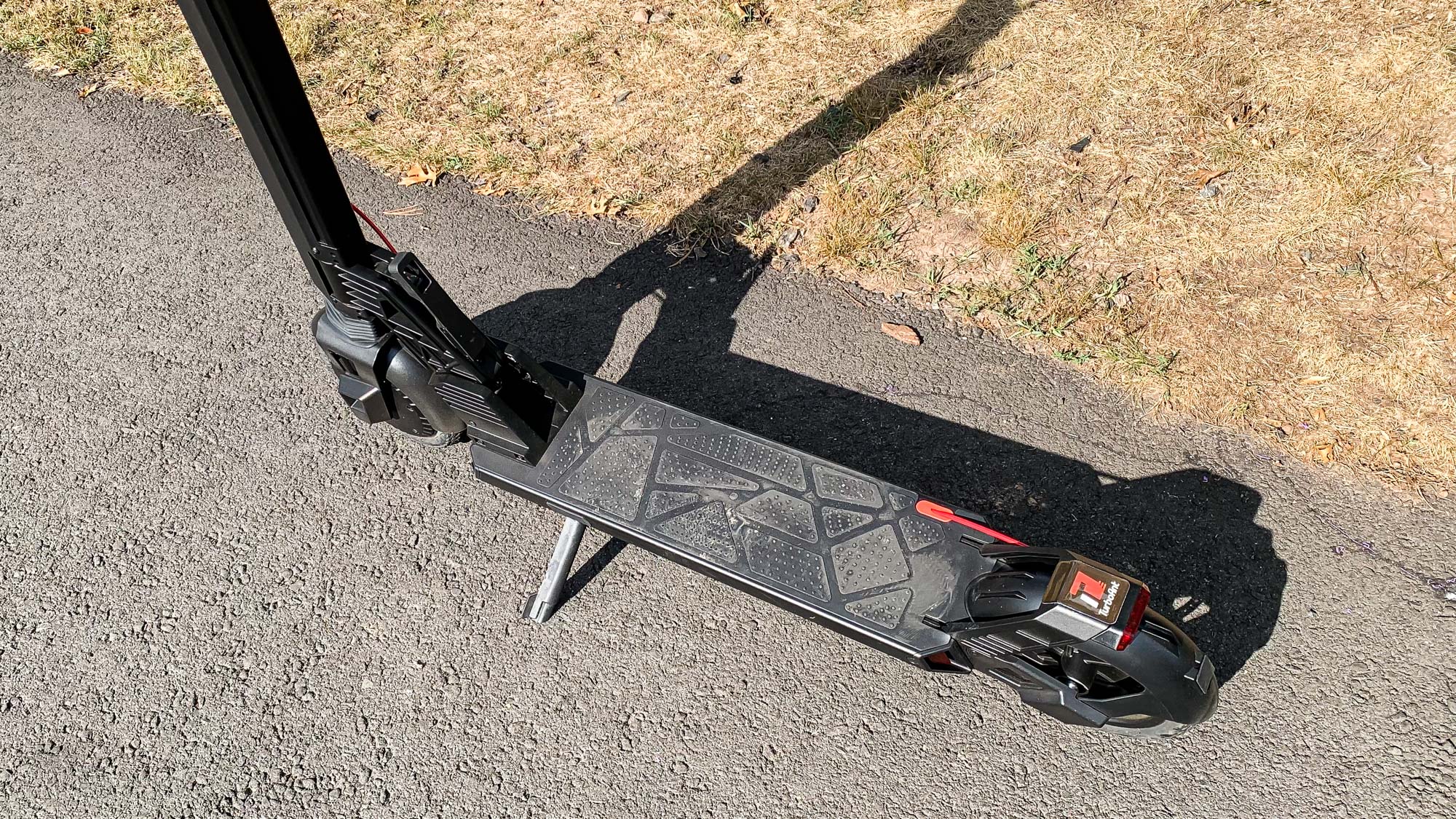
In the middle of the angled connector is a fairly large opening through which you can thread a bike lock.
The V8 has two batteries: one in the deck, and one in the downtube, which can be removed so that you can charge it wherever. The combination of both batteries gives the V8 a hypothetical range of up to 50 miles. However, the resulting thickness of the downtube, plus the weight of the scooter — a hefty 47 pounds — makes it very hard to carry.
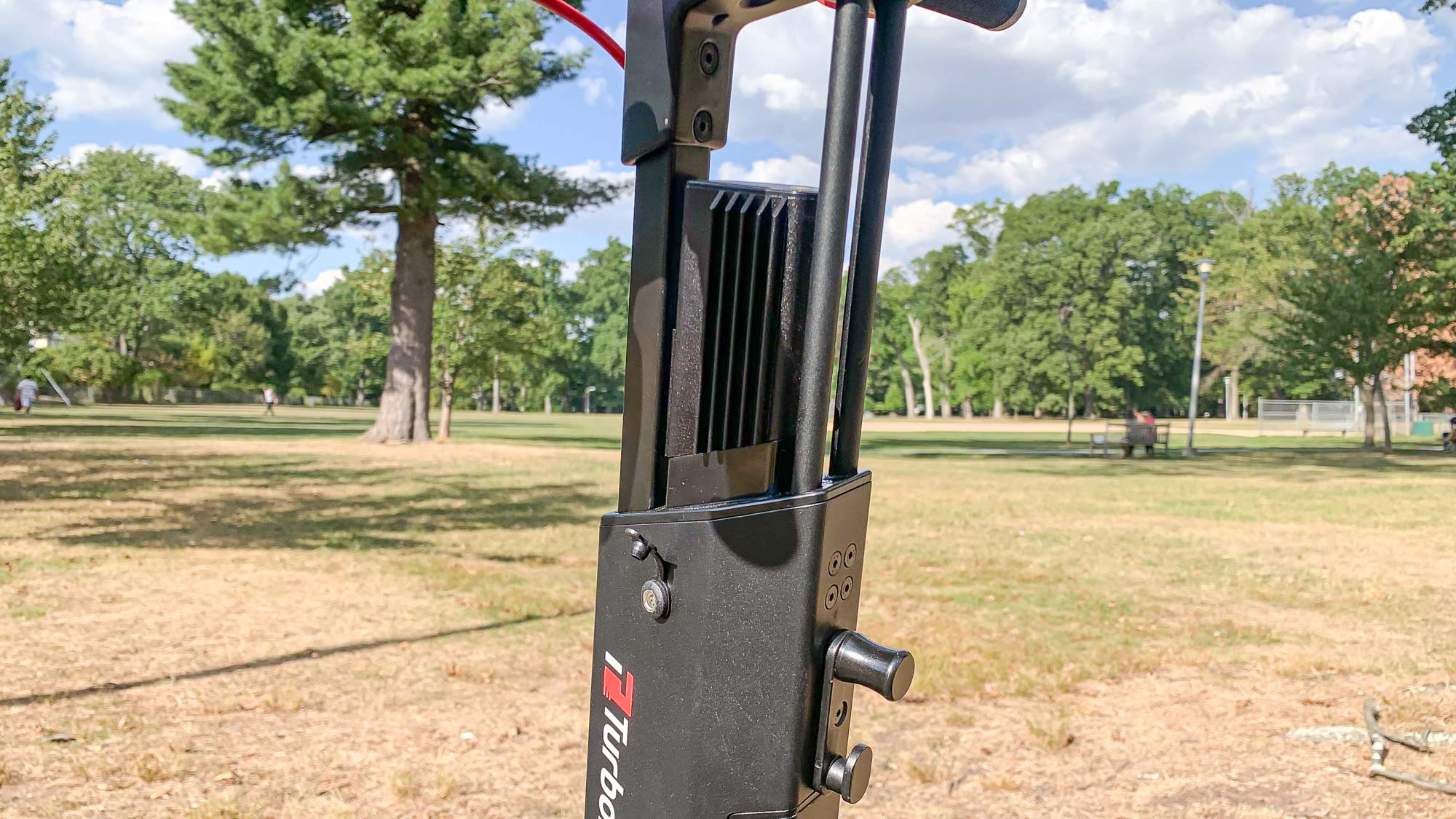
In the center of the handlebars is a small black and white display that shows your current speed as well as how much charge remains in each of the V8’s batteries. The right handlebar has a thumb-activated throttle along with a single button to turn the V8 on and off, activate its lights, and switch between its three riding modes (Eco, Comfort, and Sport).
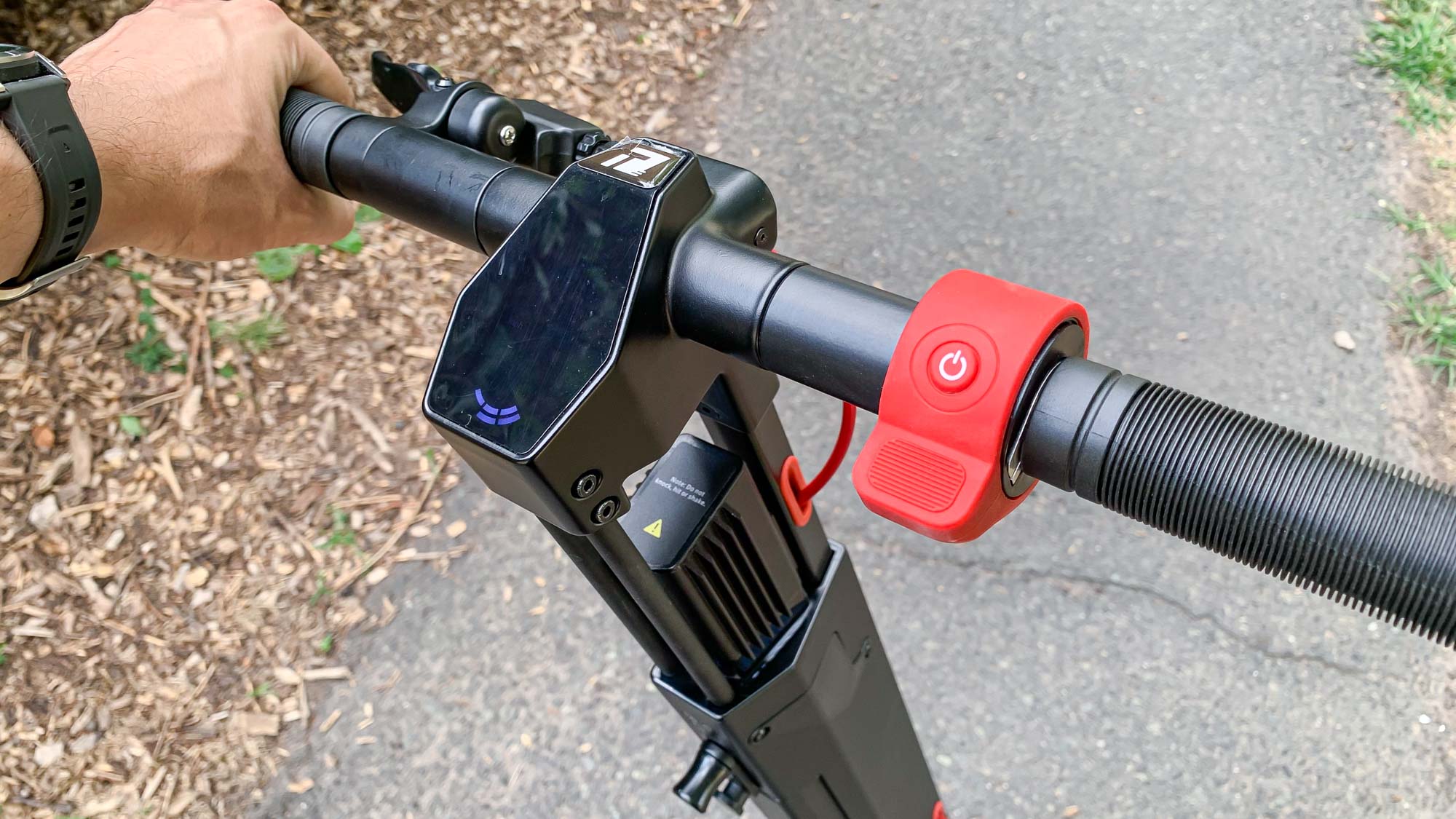
The scooter also features mechanical disc brakes and electronic brakes, as well as a headlight and a tail light. I liked that there were lights not just at the top of the handlebar, but also in the front and back of the desk; the more lights, the easier it is for cars to see you on the road.
TurboAnt V8 review: Performance
Like many of the electric scooters I test, I rode the V8 several times to and from my local train station as part of my daily commute, as well as around town. Overall, I found the V8 to be a solid performer.
The V8’s 450W front hub-mounted motor was able to scoot me around comfortably at speeds up to 20 miles per hour. The V8’s 9.3-inch pneumatic tires helped smooth out bumps somewhat, as did its full suspension: The front tire has a single shock absorber, while the rear tire has dual springs mounted horizontally inside the chassis.
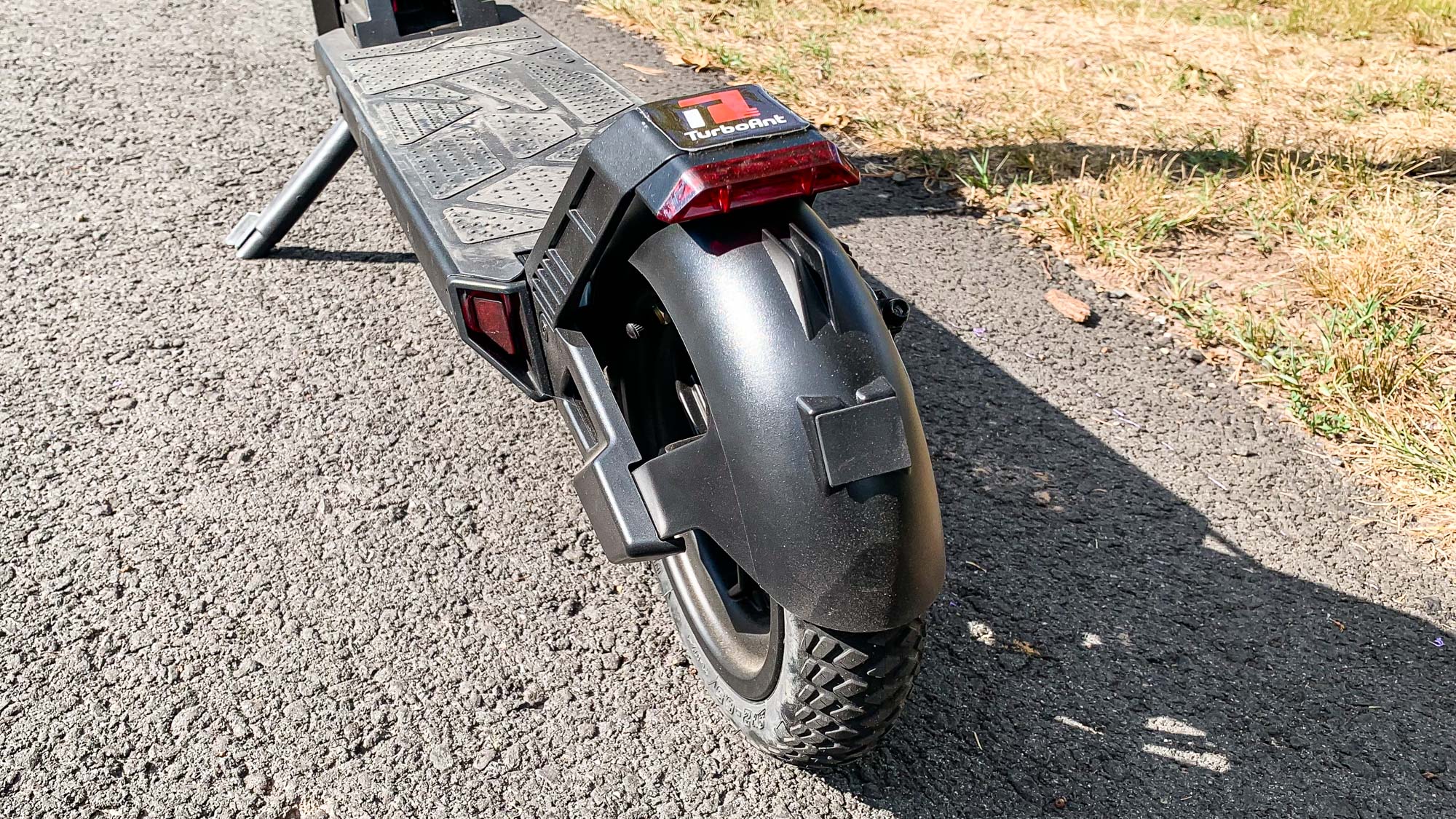
Going up a steeper hill, I was a little disappointed that the V8 slowed to around 6 mph; that’s the speed I usually get from scooters with much smaller motors. The Segway Ninebot Kickscooter Max, which has a 350W motor in its rear wheel, was able to keep me going at around 10 mph.
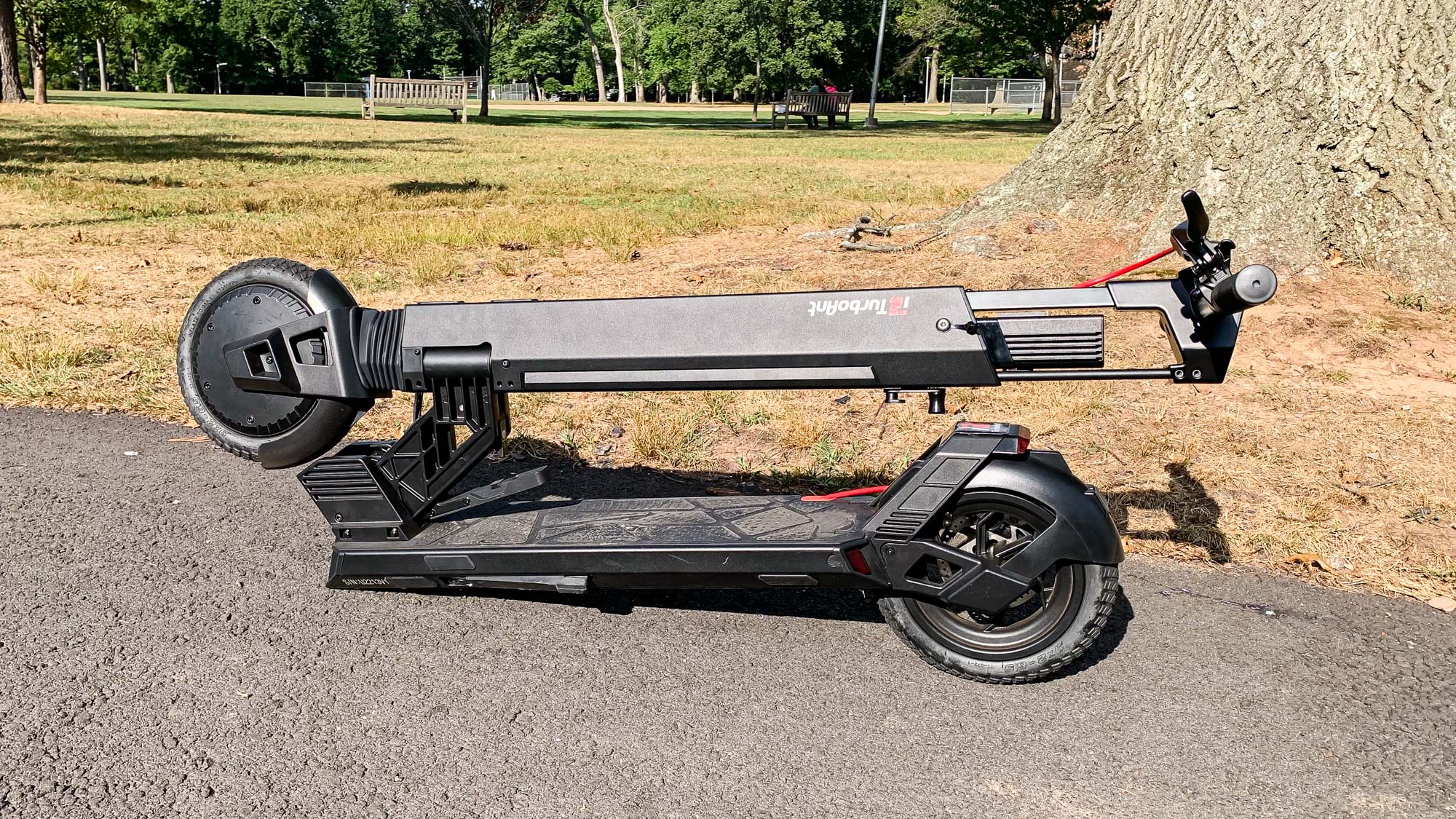
The two-step quick-release mechanism that lets you fold the V8’s downtube was as beefy as the rest of the scooter, yet it was very easy to use. And, the bike lock slot was more than large enough for my Kryptonite lock.
TurboAnt V8 review: Battery life and range
Turboant advertises the V8 having a range of up to 50 miles, thanks to its dual 36V, 7.5 Ah batteries. Of course, that’s under ideal conditions; in actuality, I saw far less of a range.
After riding the scooter for 10 miles under somewhat hilly streets, the battery(s) had dropped to 50% — indicating that I’d most likely get about 20 miles out of the V8 before I’d need to recharge it. Of course, your mileage will vary based on your terrain, and the size and weight of the rider.
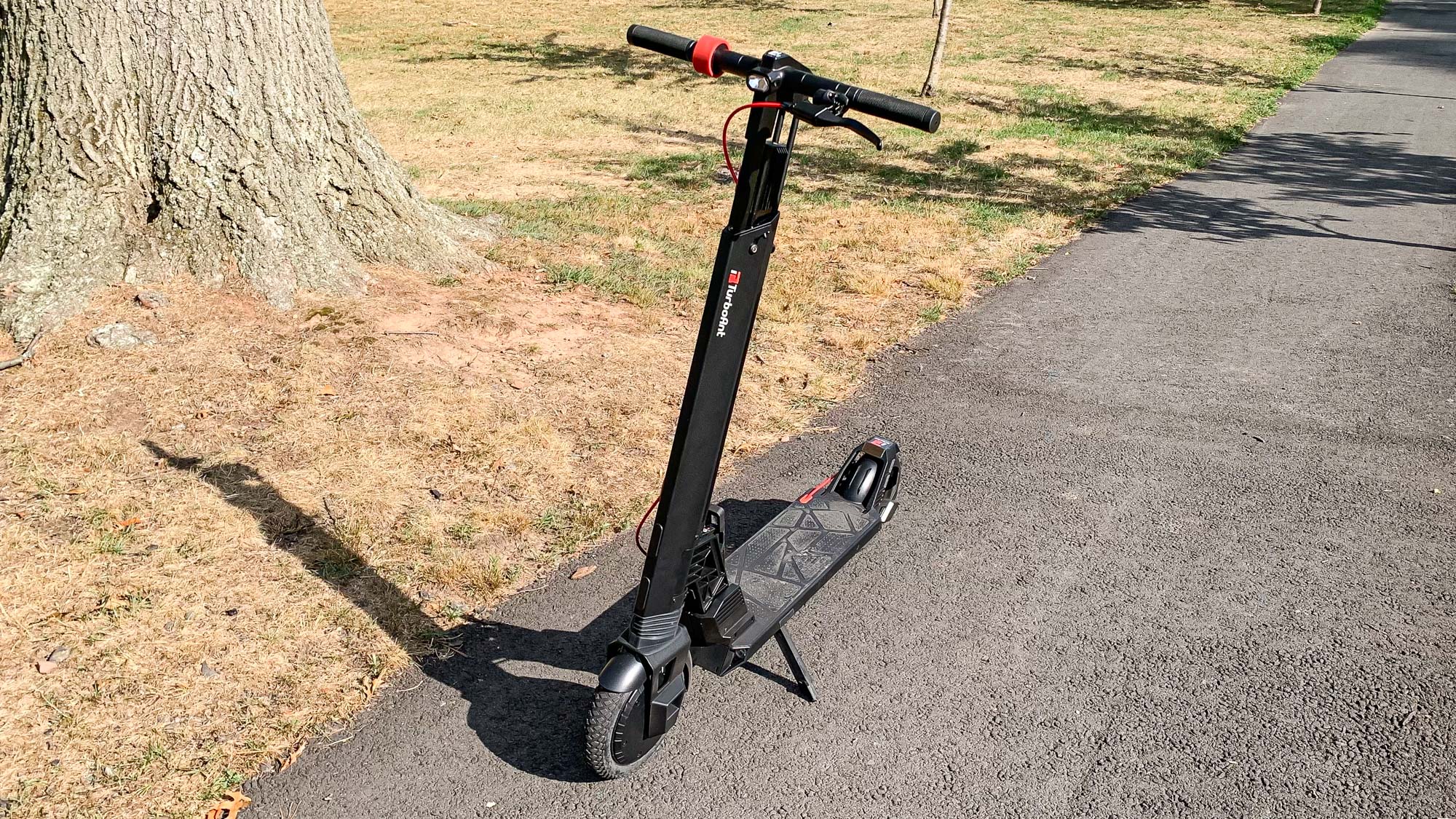
One thing in the V8’s favor is that one of its batteries — the one in the downtube — is removable, so you don’t have to lug this 47-pound behemoth up a flight of stairs.
TurboAnt V8 review: Verdict
Among the best electric scooters we’ve tested, only the $899 Segway Ninebot Kickscooter Max, with a 40-mile range, is comparable to what the TurboAnt V8 offers. The Segway has a more subdued design, and its slimmer downtube and marginally lighter weight (41 pounds) makes it easy to carry.
We also found that the Segway offered a bit more power when climbing up hills. But, there’s no security slot for a bike lock, and its battery is non-removable. If you’re looking for an electric scooter with some range — and don’t have to carry it up stairs — the TurboAnt V8 is worth checking out.

Michael A. Prospero is the U.S. Editor-in-Chief for Tom’s Guide. He oversees all evergreen content and oversees the Homes, Smart Home, and Fitness/Wearables categories for the site. In his spare time, he also tests out the latest drones, electric scooters, and smart home gadgets, such as video doorbells. Before his tenure at Tom's Guide, he was the Reviews Editor for Laptop Magazine, a reporter at Fast Company, the Times of Trenton, and, many eons back, an intern at George magazine. He received his undergraduate degree from Boston College, where he worked on the campus newspaper The Heights, and then attended the Columbia University school of Journalism. When he’s not testing out the latest running watch, electric scooter, or skiing or training for a marathon, he’s probably using the latest sous vide machine, smoker, or pizza oven, to the delight — or chagrin — of his family.
